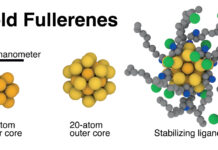
Team GB skeleton rider Lizzie Yarnold won a stunning Winter Olympic gold on February 17, backed up by bronzes for Laura Deas and Dom Parsons. Thanks to drag-resistant ridges, 3-D laser scanning, and topnotch material, Team GB’s skeleton suits are said to have provided up to a one-second advantage per run over the rest of the field and have been a hot topic of controversy.
What makes these revolutionary suits so speedy – and just how important were these technological innovations in Team GB’s riders’ success? The Conversation put these questions to Nick Martin, senior lecturer in Aerodynamics at Northumbria University.
How do the suits give the riders their extra speed?
The aerodynamics of a skeleton bobsled and rider are complex, and our knowledge of fluid mechanics is far from complete. This creates opportunities for research and development programmes that push the frontiers of our aerodynamic understanding to produce technological innovations that give riders an all-important edge.
Drag is the aerodynamic force that opposes an object’s motion through air and slows it down. Only about 10% of the drag force acting on skeleton riders comes from the bobsled, meaning that the greatest potential for improving the time it takes to traverse the 1,376.38 meter track in Pyeongchang is to optimising the aerodynamics of the athletes themselves.
Read more: Were Team GB’s skeleton suits responsible for fantastic three medal haul?
Thumbnail courtesy of phys.org












